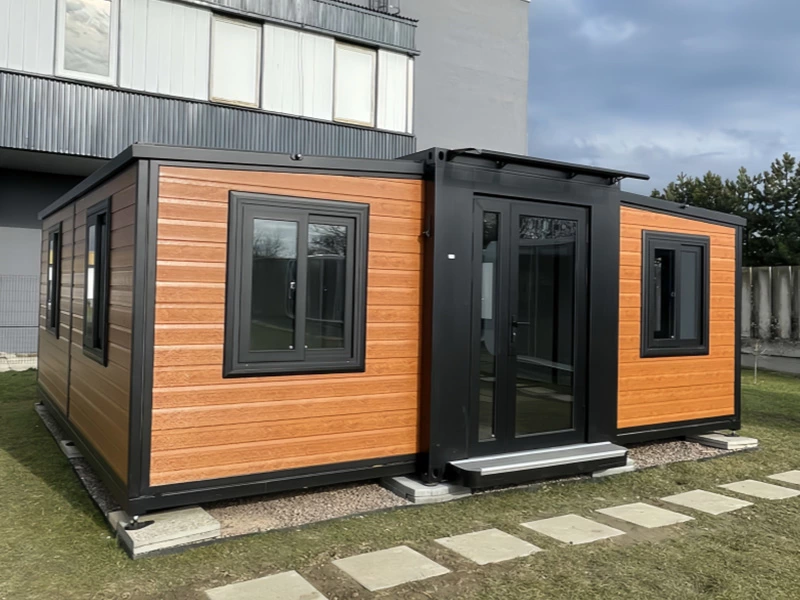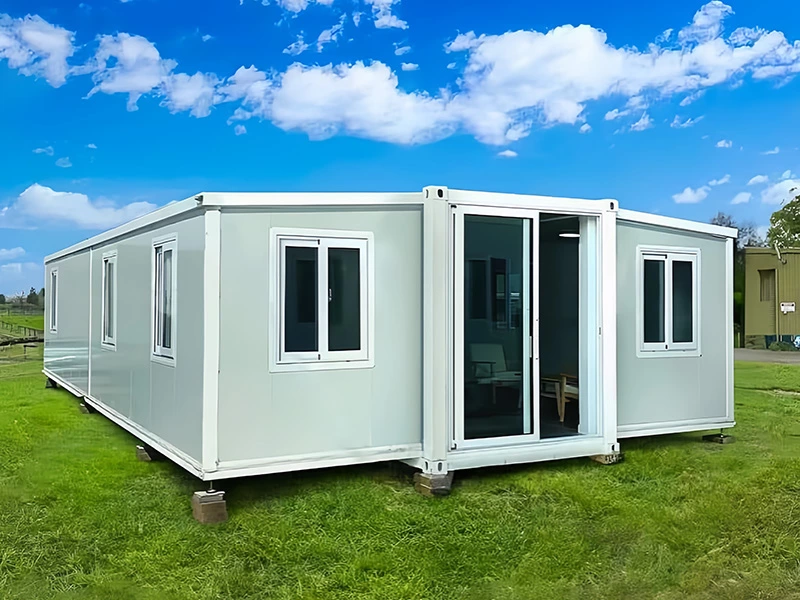Folding vs. Flat Pack Container House: Which One Suits You Best?
With the rapid development of modular construction, folding container houses and flat-pack container houses have become two of the most representative convenient building solutions. Both have advantages such as rapid installation, flexible transportation, and customizable design, but they also differ significantly in structural design, installation methods, and application scenarios.
What is a Folding Container House?
A folding container house is an innovative modular building form with a "Z" or "X" shaped structure design. It can be unfolded or folded in a short time, enabling rapid installation and convenient transportation.
During transportation, the house can be folded down to only 0.35 meters thick, significantly reducing volume and transportation costs. Upon arrival at the site, it can be unfolded and installed in just a few steps. Its flexibility and efficiency make it ideal for emergency rescue, temporary accommodation, and short-term projects.
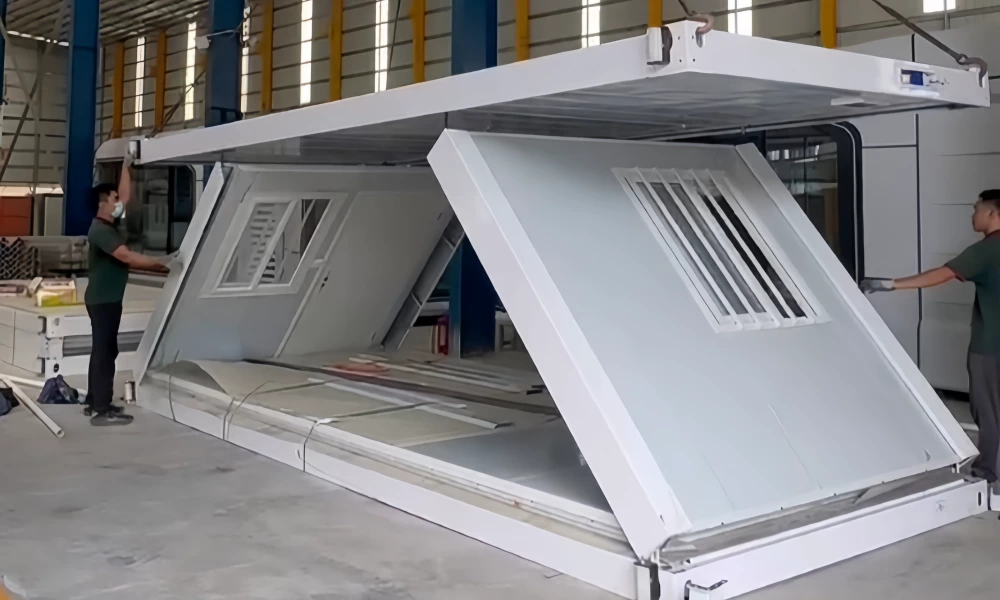
What is a Flat Pack Container House?
A flat pack container house is a modular building system based on high-strength steel structures and composite panels. All components (floor, walls, roof, doors, windows, etc.) are flatly packaged into a standard container for transportation. The top and bottom are two complete wall panels, and the sides can be disassembled and packed. On-site assembly is simple and complete.
This design is not only safe and environmentally friendly in transportation, but also allows for modular combination, making it suitable for various long-term use scenarios such as office buildings, dormitories, schools, and shops.

What are the similarities between the two types of container houses?
Disassembly and Reusability
Both are reusable buildings, capable of being disassembled, moved, and reassembled as needed for projects, reducing construction waste, achieving recycling, and conforming to green building principles.
Environmentally Friendly and Sustainable
Environmentally friendly materials are used in both production and installation, supporting recycling and reducing carbon emissions, meeting modern energy-saving and environmental protection standards.
High-Strength Structural Design
Both types of houses utilize galvanized steel frames and color-coated steel composite panel structures, ensuring excellent stability, corrosion resistance, and durability. They maintain reliable performance even in high temperatures, strong winds, or humid environments.
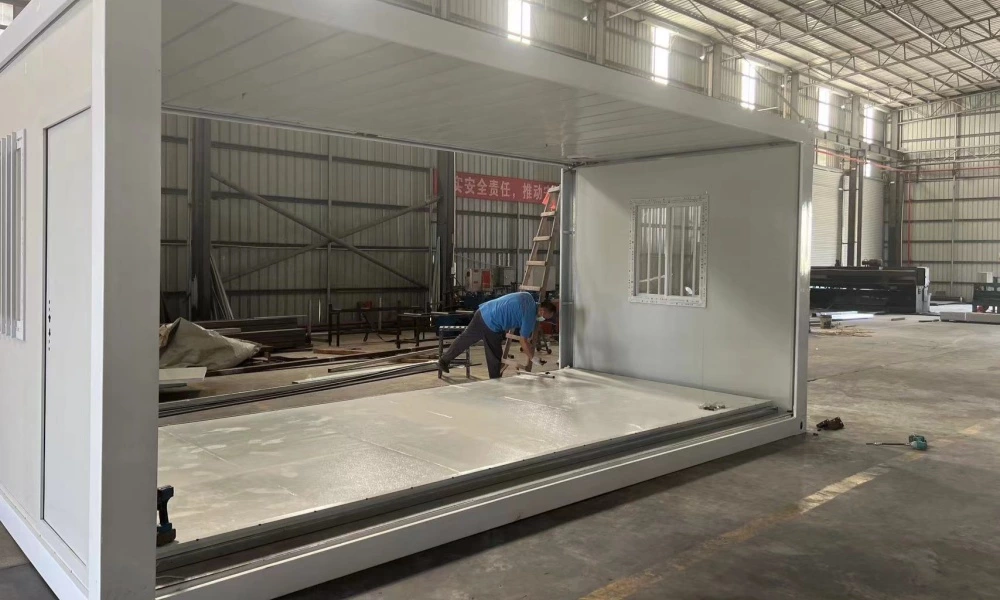
Superior Safety Performance
Both container houses are fireproof, waterproof, and shockproof, suitable for use in various climatic conditions, ensuring long-term safety and stability.
Convenient Transportation and Installation
Both employ modular structures, enabling convenient global transportation and rapid installation. The folding type saves space during transportation, while the flat-pack type improves handling efficiency with safe and neat packaging.
High Flexibility and Customizability
Both folding and flat-pack container houses can be customized in size, layout, and internal configuration to meet customer needs. Whether it's a temporary office, construction site dormitory, or vacation home, it can be flexibly designed to meet different functional needs.
What are the differences between the two types of container houses?
1. Design and Installation Methods
- Folding Container Houses:Their core advantage is rapid assembly. They can be installed simply by unfolding and are ready for use within hours, making them ideal for emergency rescue and short-term projects.
- Flat Pack Container Houses:Require more assembly steps and a slightly longer installation time, but the overall structure is more robust, suitable for long-term use and projects requiring high safety standards.
2. Space and Size Considerations
- Folding houses have a more compact structure and occupy less space, often used for temporary dormitories, construction site offices, and kiosks.
- Flat Pack houses offer more flexible space layouts, allowing for larger buildings through modular assembly, making them ideal for office areas, dormitories, warehouses, and commercial spaces.
3. Cost and Maintenance
- Folding Houses: Lower cost and quick installation significantly save time and labor costs, making them particularly suitable for customers with limited budgets or short-term needs.
- Flat Pack Houses: Slightly higher initial cost, but with a robust structure, low maintenance costs, and a longer lifespan, suitable for long-term projects and customers with high quality requirements.
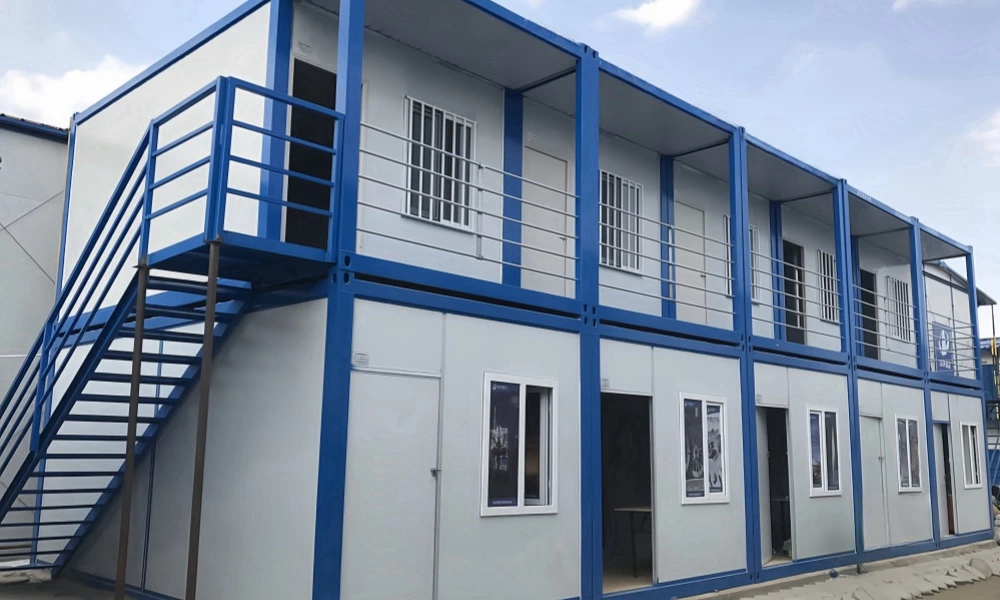
4.Application Scenarios
Folding Container Houses are suitable for:
- Disaster relief and emergency shelter: Rapidly setting up temporary housing or medical stations.
- Construction site accommodation and offices: Providing flexible space for short-term projects.
- Temporary exhibition and event spaces: Easy to disassemble, move, and reuse.
Flat Pack Container Houses are suitable for:
- Long-term accommodation or dormitories: Such as student apartments, staff dormitories, or resorts.
- Commercial uses: Shops, restaurants, showrooms, or temporary exhibition spaces.
- Educational and medical facilities: Temporary schools, clinics, or community centers.
5.Differences in Transportation and Loading
Both types have advantages in transportation:
Folding container houses measure 2.4m × 5.8m × 2.53m, with a folded thickness of only 0.35m. A 40-foot high cube container can hold 8 units, significantly reducing transportation and storage costs.
Flat Pack Container Houses measure 2.4m × 5.8m × 2.89m. A 40-foot high cube container can hold 10-12 units, offering higher loading efficiency and suitability for large-volume project transportation.
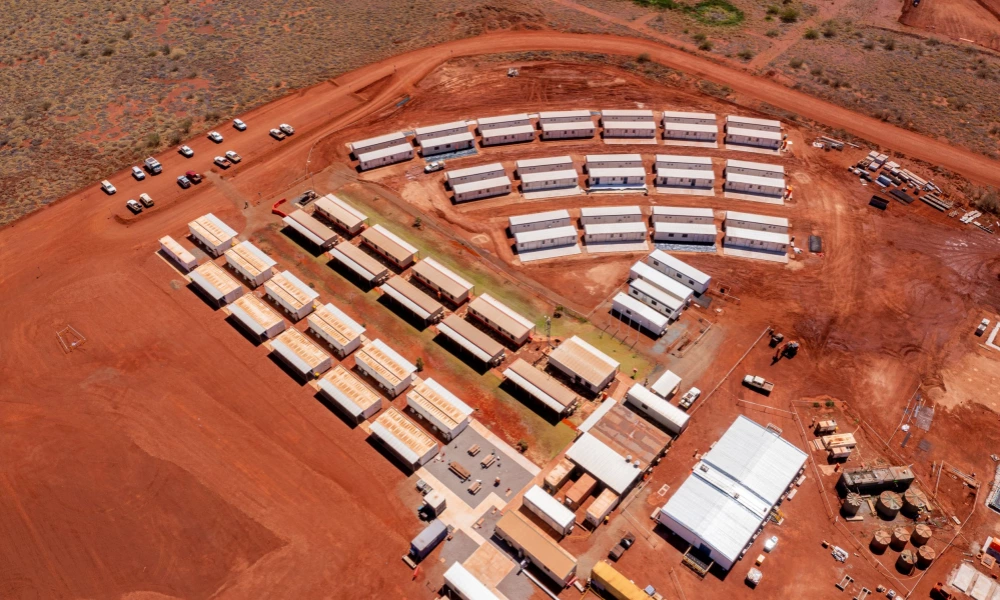
How to Choose the Right Solution?
If your project prioritizes rapid assembly, short-term use, and high mobility, a folding container house is an ideal choice.
However, if you value structural stability, comfortable space, and long-term durability, a flat-pack container house is undoubtedly the better option.
Both products represent the efficient and environmentally friendly trend of modular construction. Whichever you choose, you'll experience cost savings, increased efficiency, and flexible use.
UVO is a factory that exports container houses, providing customers with satisfactory design, technology, loading and installation solutions, and has a dedicated after-sales service team. No matter what product or purpose you choose, we will provide you with the highest quality products and services.


